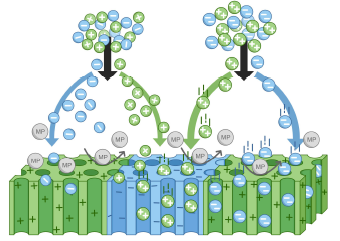Mosaic Membranes: Channel-charged polyelectrolyte multilayer based hollow fiber nanofiltration membranes for micro-pollutant removal
- Persons involved: Halil Zengin (PhD Candidate), Wiebe de Vos (Promotor), Hannah roth (co-promotor/supervisor)
- Duration: 2024-2028
- Funding: European Research Council (ERC) Consolidator Grant Mosaic
Introduction
Global water quality and safety is under threat by the rising concentrations of organic micropollutants (OMPs) in surface and drinking water. OMPs are small organic molecules that originate from agricultural, pharmaceutical and industrial sources, with potential long term harm towards humans, aquatic life and the environment. Currently, nanofiltration and reverse osmosis membranes have proven to be promising solutions for removal of OMPs, however they have significant limitations such as low water permeability, high operating pressures and high salt retentions and the requirement for remineralization of the permeate to restore mineral quality for drinking water applications.
A particular solution to high salt retentions was proposed in the 1930s by Sollner1, where a membrane that combines positive and negative charged domains (mosaic membrane), allows the passage of essential minerals but at the same time blocks molecules such as OMPs. In this project, a channel charge-mosaic nanofiltration polyelectrolyte multilayer (PEM) membrane will be developed, allowing for permeation of minerals, while efficiently removing the OMPS.
Key words
Mosaic Membranes, Nanofiltration, Organic Micropollutants (OMPs), Polyelectrolyte Multilayers (PEMs)
Technological challenges
The key challenge for building channel-charge mosaic PEM membranes is the formation of negative and positive charged domains that span the entirety of the multilayer to achieve high mineral permeation.
Research questions
1) The development of beyond the state of the art of mosaic membranes.
2) A working mosaic membrane that rejects organic micropollutants while allowing the passage of essential minerals.

Representation of a Mosaic Membrane
References:
1. Söllner, K., Uber Mosaikmembranen, Biochem. Z. 244 (1932) 370

